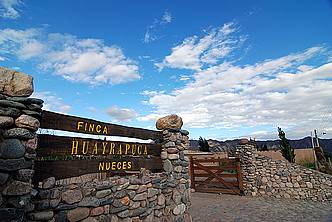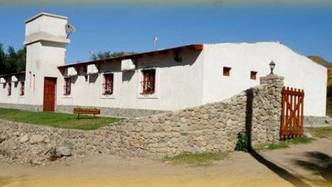A Spiritual Trip
We went on a religious tour in the surrounding areas of Chilecito. We visited the most important churches and temples in the Department in an excursion full of faith and mystique.
The Department of Chilecito is a piece of land rich in history and tradition where religious faith is strongly felt. The settlements creating this Department have important sanctuaries of Catholic worship characterized by their architectural sobriety and by the festivities celebrated in this holy place. These characteristics have been ideal for the development of strong religious tourism in the region. Next, we suggest visiting the most significant temples surrounding Chilecito that will revive the mystique and faith of visitors. There are 32 churches and chapels in the region. They date from the XVII to the XX centuries and have kept their original naves and entrances. In this opportunity we only visited the churches declared National Historical Monuments for having remarkable sacred-colonial architecture.
The tour begins in San Nicolas Chapel, located 5 kilometers from Chilecito on old Route 40. It dates from the XVII century. Plain and yet beautiful, it features a jewel of Baroque Colonial Art in its high altar. The next stop is Los Sarmientos in order to visit Santa Clara chapel. Of simple structure and brick floor, it has an interesting masonry of carved algarrobo. The image of Santa Clara outstands among its images, dating from the XVIII century. It is carved in wood and the laminated silver crown and its natural blond hair stand out. It is celebrated every August 12th and many followers arrive on that date. The next town was Malligasta. We visited the Immaculate Conception Church, located opposite the square. The green surroundings and the spread out colonial buildings give a regional touch to it. The sobriety of its architecture prints strength and beauty at the same time. Every December 31st, Tinkunaco is celebrated there. It represents the meeting between the Mayor Child and the image of St. Nicholas of Bari. The religious roads led us to La Puntilla, where the La Merced Church is located. It has a small side tower with an old bell, a wooden door and a missionary cross over the atrium. Inside, there is an outstanding painting by Bartolomé Esteban Murillo. The images of the Virgen del Carmen and Virgen de La Merced date from the XVIII century. Next, we visited Anguinán, where Santa Rosa is worshipped. This church of colonial style was built by Bartolomé de Gordillo in 1784. After its restoration, it looks like one of the best exponents of its kind. The patron’s celebration is held every August 30th. Then, we headed for Nonogasta to contemplate San Vicente Ferrer Church. It is located at the end of a wide rectangular square allowing tourists to get an impressive perspective of the temple. Built by the Dávila family between 1810 and 1820, it still keeps general colonial characteristics and its thick adobe walls. In Vichigasta, we found the church that worships San Buenaventura, from Upper Peru, every July 14th. This temple is considered to be the oldest in the Department since it dates from 1600. The huge dimensions of its constructions catch everyone's attention. It keeps its original structure even though it underwent some minor alterations on its front and tower at the beginning of the XX century. Finally, we reached Sañogasta. By then, we were involved in mystique, full of faith and peace. This church worships San Sebastián. The original bells, forged with the best metals from Famatima Hill, stand out in a picturesque stone arch. The Bruzuela and Doria family is in charge of keeping the original image of San Sebastián, a valuable carved work from the XVI century. The patron saints and the Virgen de La Candelaria de Copacabana celebrations are held on February 2nd and 3rd. Thus, our spiritual and architectural journey around Chilecito Department ends. Adobe walls, ancient images and stories that have lasted through time are some of the tokens from this tour around the various districts.
Marcelo Sola
Marcelo Sola























